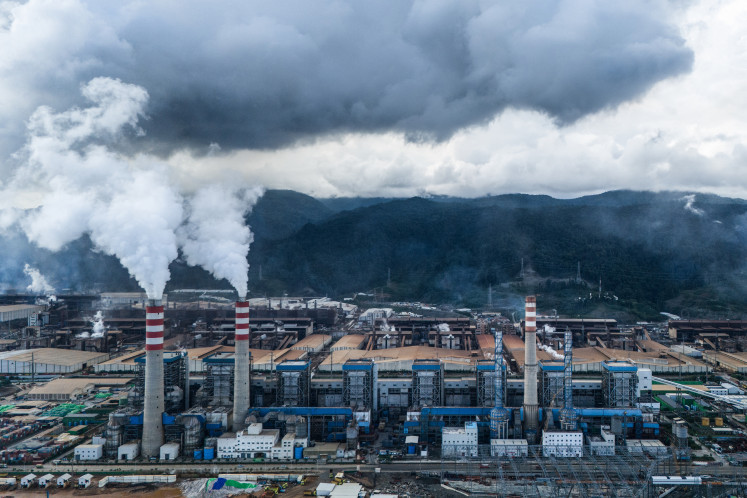Popular Reads
Top Results
Can't find what you're looking for?
View all search resultsPopular Reads
Top Results
Can't find what you're looking for?
View all search resultsLapindo mud could harm Surabaya mangrove forest
Mud dumped into the sea from the Lapindo mudflow through the Porong river will impact coastal ecosystems from eastern Surabaya to Pasuruan on Madura Island, researchers warn
Change text size
Gift Premium Articles
to Anyone
M
ud dumped into the sea from the Lapindo mudflow through the Porong river will impact coastal ecosystems from eastern Surabaya to Pasuruan on Madura Island, researchers warn.
A 2,300-hectare mangrove forest in the Surabaya municipality's Mangrove Center is now at risk, as it is only 30 kilometers from the mudflow outlet.
Edy Hendras Wahyono, a mangrove researcher at the Nature Conservation and Education Foundation (YPKA), said his team would carry out comprehensive research on potential threats from the mud to the mangrove forest.
"We'll analyze the mudflow content, as well as the condition of mangroves planted by the Sidoarjo Mudflow Mitigation Agency *BPLS* at the end of the Porong river," he told The Jakarta Post recently, after a presentation about a visibility study on mangrove development before Surabaya Mayor Bambang Dwo Hartono and representatives of cigarette manufaturer PT H.M. Sampoerna.
Co-funded by the municipality and Sampoerna, the Surabaya Mangrove Center has been designed as a conservation, research and ecotourism area, like the Muara Angke Wildlife Reserve in Jakarta and the Mangrove Information Center in Bali.
Edy said Surabaya's east coast was "very feasible" for a conservation site, considering its natural condition and the existence of 16 mangrove species, 137 bird species, 50 insect species, seven mammal species, 10 herpetofauna species, 18 fish species and seven crustacean species.
"There are also mangrove tigers, long-tailed monkeys that pick up mangrove fruit with their tails. red dragonflies, which indicates a potential sign of water springs in the vicinity, and Black Drongo birds that are rarely found in Indonesia. as well as migratory birds from New Zealand," he said.
The whole ecosystem was in danger, he went on, thanks to the mudflow, coupled with plastic waste from the nearby Ria Ken-jeran beach and Surabaya's Tanjung Perak port.
Marine expert Muktasor of the 10th November Institute of Technology (ITS) also warned the Lapindo mud would be spread out by waves, endangering fishermen's catches from Pasuruan through to Probolinggo and potentially making the Madura Strait shallower through silt deposits.
However, deputy BPLS operational head Soffian Hadi said the mud being channeled out to sea would not reach the Madura strait or beaches in Pasuruan, but would settle along the Sidoarjo coast.
In response to warnings, Mayor Bambang has ordered an immediate study into the potential threat from the mud, to guard against damage to mangrove forests, as 40 percent of the forests have already been destroyed by illegal logging and mangrove diseases.
"I have prepared all the things necessary to develop the Surabaya east coast as a conservation site, so my successor will continue this program when I'm no longer in office," he said.
"To strengthen our legal base, we have also asked the government to designate the area for conservation."










